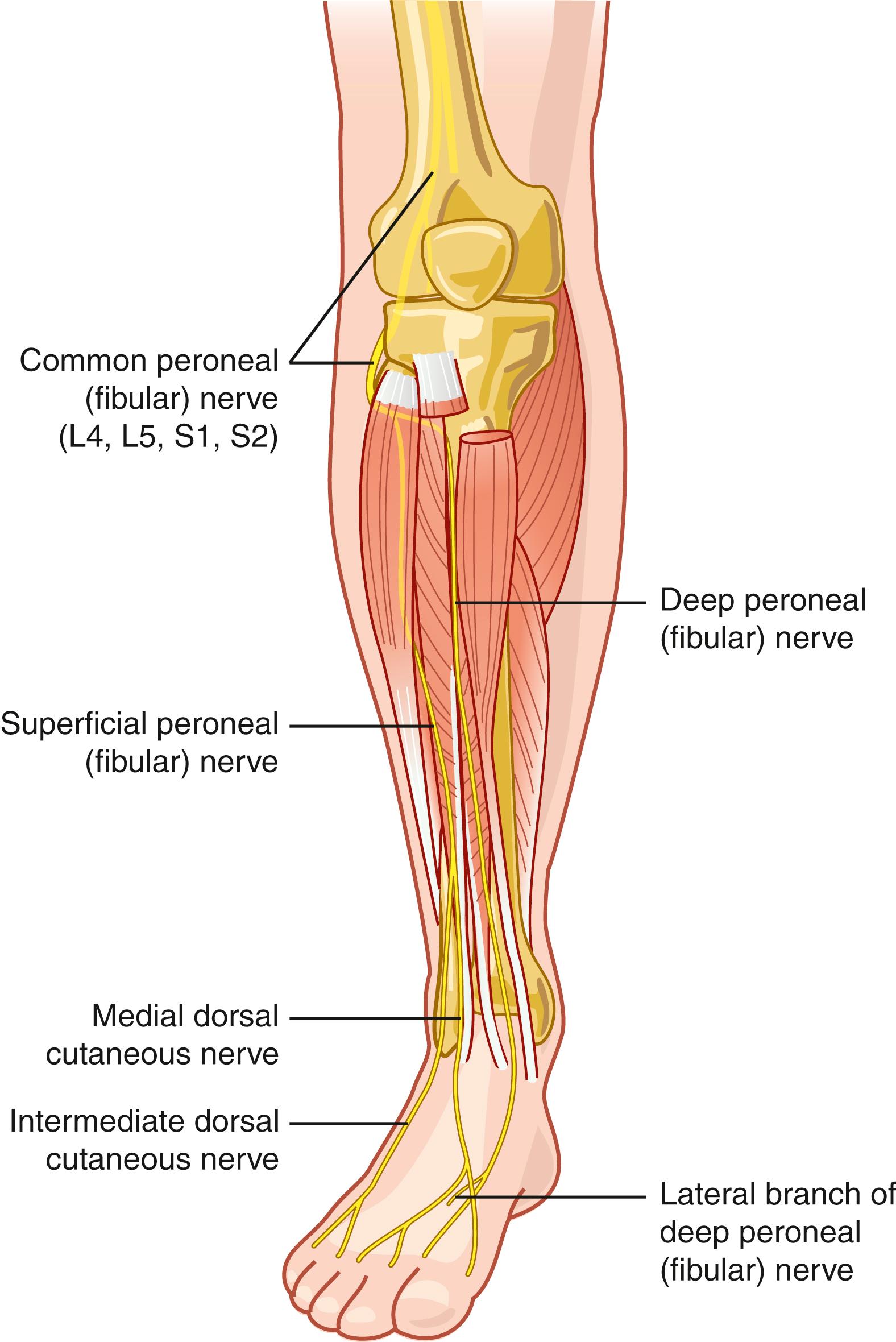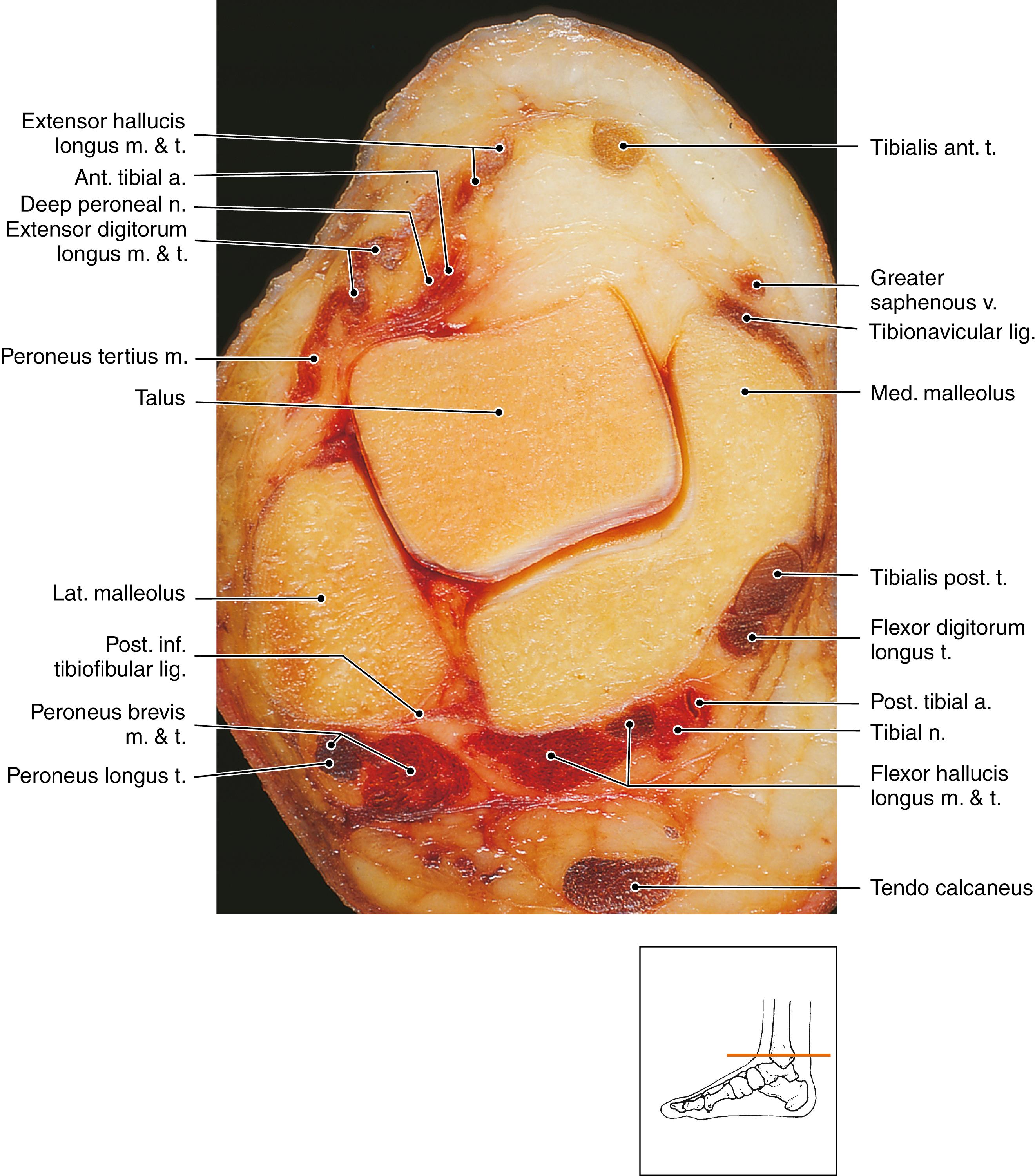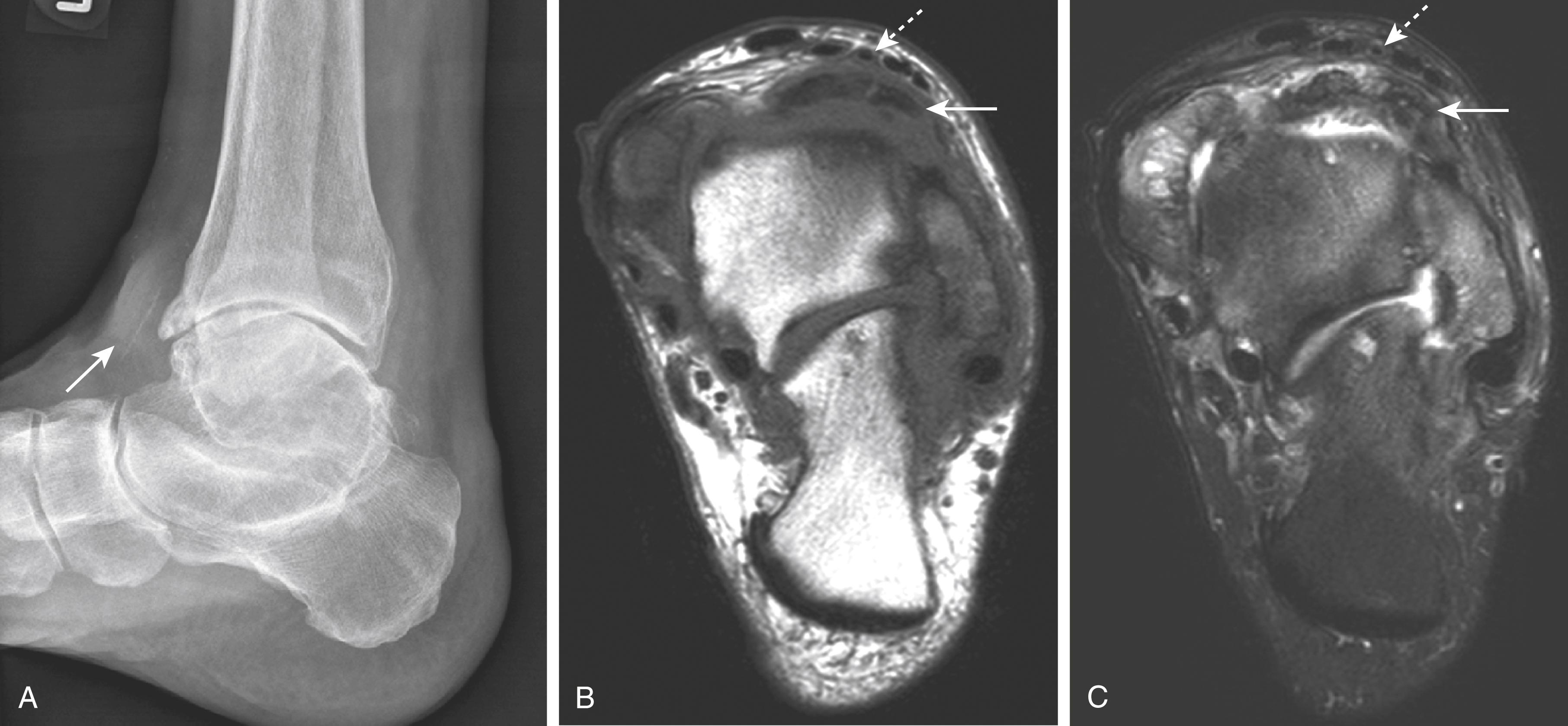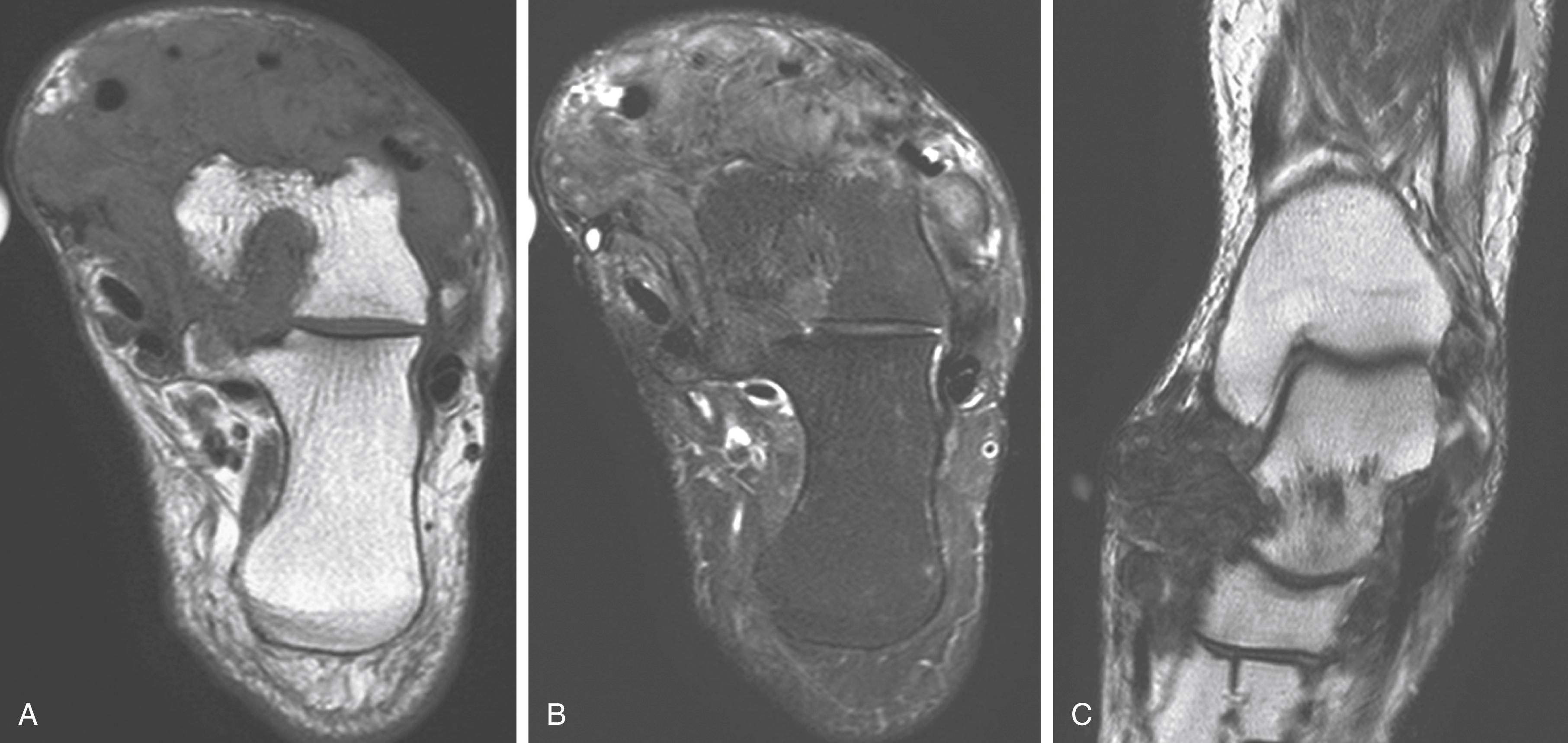Physical Address
304 North Cardinal St.
Dorchester Center, MA 02124
Anterior tarsal tunnel syndrome is caused by compression of the deep peroneal nerve as it passes beneath the superficial fascia of the ankle ( Figs. 181.1 and 181.2 ). The most common cause of compression of the deep peroneal nerve at this anatomic location is trauma to the dorsum of the foot. Severe, acute plantarflexion of the foot has been implicated in anterior tarsal tunnel syndrome, as has the wearing of overly tight shoes, or squatting and bending forward, such as when planting flowers. Anything that has the propensity to impinge on the deep peroneal nerve—such as tumors, osteophytes, ganglia, and synovitis—can cause anterior tarsal tunnel syndrome ( Fig. 181.3 ). Anterior tarsal tunnel syndrome is much less common than posterior tarsal tunnel syndrome.



This entrapment neuropathy manifests primarily as pain, numbness, and paresthesias of the dorsum of the foot that radiate into the first dorsal web space. These symptoms also may radiate proximal to the entrapment into the anterior ankle. There is no motor involvement unless the distal lateral division of the deep peroneal nerve is involved. Nighttime foot pain analogous to the nocturnal pain of carpal tunnel syndrome often is present. The patient may report that holding the foot in the everted position may decrease the pain and paresthesias of anterior tarsal tunnel syndrome.
Physical findings include tenderness over the deep peroneal nerve at the dorsum of the foot. A positive Tinel sign just medial to the dorsalis pedis pulse over the deep peroneal nerve as it passes beneath the fascia usually is present. Active plantarflexion often reproduces the symptoms of anterior tarsal tunnel syndromes. Weakness of the extensor digitorum brevis may be present if the lateral branch of the deep peroneal nerve is affected.
Anterior tarsal tunnel syndrome often is misdiagnosed as arthritis of the ankle joint, lumbar radiculopathy, or diabetic polyneuropathy. Patients with arthritis of the ankle joint have radiographic evidence of arthritis. Most patients with a lumbar radiculopathy have reflex, motor, and sensory changes associated with back pain, whereas patients with anterior tarsal tunnel syndrome have no reflex changes and have motor and sensory changes limited to the distal deep peroneal nerve. Diabetic polyneuropathy generally manifests as symmetric sensory deficit involving the entire foot, rather than limited just to the distribution of the deep peroneal nerve. Lumbar radiculopathy and deep peroneal nerve entrapment may coexist as the so-called double crush syndrome. Furthermore, because anterior tarsal tunnel syndrome is seen in patients with diabetes, it is not surprising that diabetic polyneuropathy usually is present in diabetic patients with anterior tarsal tunnel syndrome.
Electromyography helps distinguish lumbar radiculopathy and diabetic polyneuropathy from anterior tarsal tunnel syndrome. Plain radiographs are indicated for all patients with anterior tarsal tunnel syndrome to rule out occult bony disease. On the basis of the patient’s clinical presentation, additional testing may be indicated, including complete blood cell count, uric acid, sedimentation rate, and antinuclear antibody testing. Magnetic resonance imaging (MRI) and/or ultrasound imaging of the ankle and foot is indicated if joint instability or a space-occupying lesion is suspected ( Fig. 181.4 ). The injection technique described later serves as both a diagnostic and a therapeutic maneuver.

The common peroneal nerve is one of the 2 major continuations of the sciatic nerve, and the other is the tibial nerve. The common peroneal nerve provides sensory innervation to the inferior portion of the knee joint and the posterior and lateral skin of the upper calf. The common peroneal nerve is derived from the posterior branches of the L4, L5, S1, and S2 nerve roots. The nerve splits from the sciatic nerve at the superior margin of the popliteal fossa and descends laterally behind the head of the fibula. The common peroneal nerve is subject to compression at this point by improperly applied casts and tourniquets. The nerve also is subject to compression as it continues its lateral course, winding around the fibula through the fibular tunnel, which is made up of the posterior border of the tendinous insertion of the peroneus longus muscle and the fibula itself. Just distal to the fibular tunnel, the nerve divides into its 2 terminal branches, the superficial and the deep peroneal nerves. Each of these branches is subject to trauma and may be blocked individually as a diagnostic and therapeutic maneuver.
The deep branch continues down the leg in conjunction with the tibial artery and vein to provide sensory innervation to the web space of the first and second toes and adjacent dorsum of the foot (see Fig. 181.5 ). Although this distribution of sensory fibers is small, this area is often the site of Morton neuroma surgery; thus, it is important to the regional anesthesiologist. The deep peroneal nerve provides motor innervation to all of the toe extensors. The deep peroneal nerve passes beneath the dense superficial fascia of the ankle, where it is subject to entrapment.
Become a Clinical Tree membership for Full access and enjoy Unlimited articles
If you are a member. Log in here